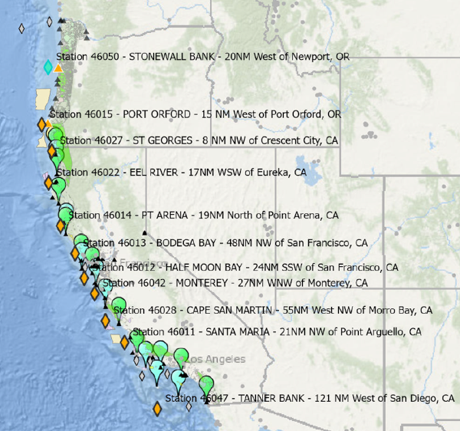
To help the United States achieve its goal of deploying 30 gigawatts of offshore wind energy by 2030, the U.S. Department of Energy’s Wind Energy Technologies Office and the Bureau of Ocean Energy Management awarded $15 million for five projects. These projects will gather essential environmental and wildlife data to support offshore wind development. As part of this initiative, the Electric Power Research Institute (EPRI) is spearheading a collaborative study to assess the potential risks that offshore wind development may pose to bats along the U.S. Pacific Coast.
The project is divided into two phases. In Phase 1 (2023), the team started identifying potential locations and site partners to host bat detector equipment. In Phase 2 (2024 to 2026), the team will deploy the equipment and collect, analyze, and model data in relation to weather and geospatial activity.
Guided by EPRI, the project team—which includes Bat Conservation International, Stantec, the U.S. Geological Survey, and Woods Hole Group—is collaborating with various private, non-profit, academic, and state/federal regulatory stakeholders. Their goal is to identify up to twenty coastal and twenty offshore sites suitable for long-term passive acoustic monitoring (PAM). Existing site partners include the National Park Service, Bureau of Land Management, National Oceanographic and Atmospheric Administration, Scripps Institute of Oceanography, and Oregon State University. The project will primarily use ultrasonic acoustic detectors to monitor bat activity from California to Washington. Additionally, the team will conduct a targeted telemetry study on a known island stopover site to supplement the PAM results and help define the environmental and seasonal factors affecting offshore bat activity. This combination of spatial and climatological data will be used to identify conditions conducive to bat migration and assess how risk factors may impact this baseline dataset.
The primary goal of the project is to utilize the findings from acoustic bat monitoring and passive telemetry to outline the environmental and seasonal conditions in which bat activity occurs offshore along the U.S. Pacific Coast. By applying a spatial model of coarse-scale climatological data, the project aims to identify offshore areas where conditions favorable to bat presence are more common.
As part of the project, the team aims to:
- Adapt and validate acoustic technology for both stationary and mobile sampling of bats in offshore environments.
- Pilot a demonstration using autonomous aquatic vehicles for acoustic data collection.
- Create a 2-year baseline dataset of offshore bat activity to document the timing and conditions of bat activity.
- Map the spatial distribution of bat activity along the coasts of California and Oregon.
- Define the environmental risk factors for bats and measure seasonal spatial variations in these conditions offshore.
- Document the stopover behavior of bats on islands during peak migration periods to better understand the use of islands and offshore habitats, providing insights into population-level risks associated with offshore wind energy development.
All analyzed and raw data will be uploaded to the North American Bat Monitoring Program (NABat) database, a collaborative partnership coordinated by the USGS to systematically document bat populations across North America. The team will also provide data to other relevant regional or national databases, including the multipurpose Marine Cadastre and others as appropriate. Study results will be shared and disseminated through stakeholder webinars, conferences, workshops, publicly available study reports, and peer-reviewed journals.
This research will validate innovative instrumentation and advance the development of monitoring technologies for evaluating bat activity in offshore environments. Consequently, it will provide a spatially explicit forecast of potential risks to bats. This baseline dataset will be invaluable for assessing bat risks and determining the relative cost and effectiveness of mitigation measures that could reduce these risks, if necessary, once offshore wind energy facilities are developed.
Additional details can be found on the project’s website.
